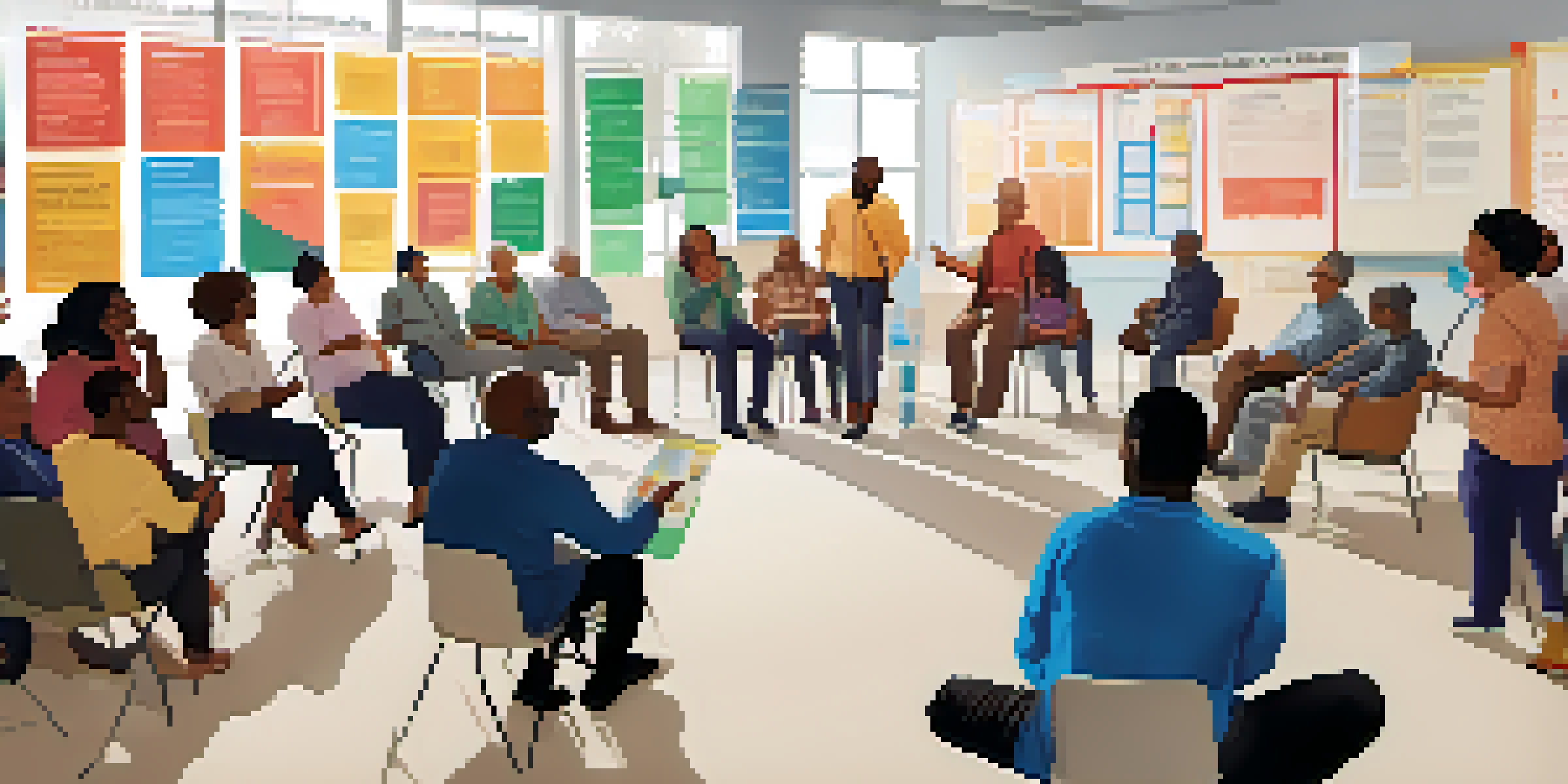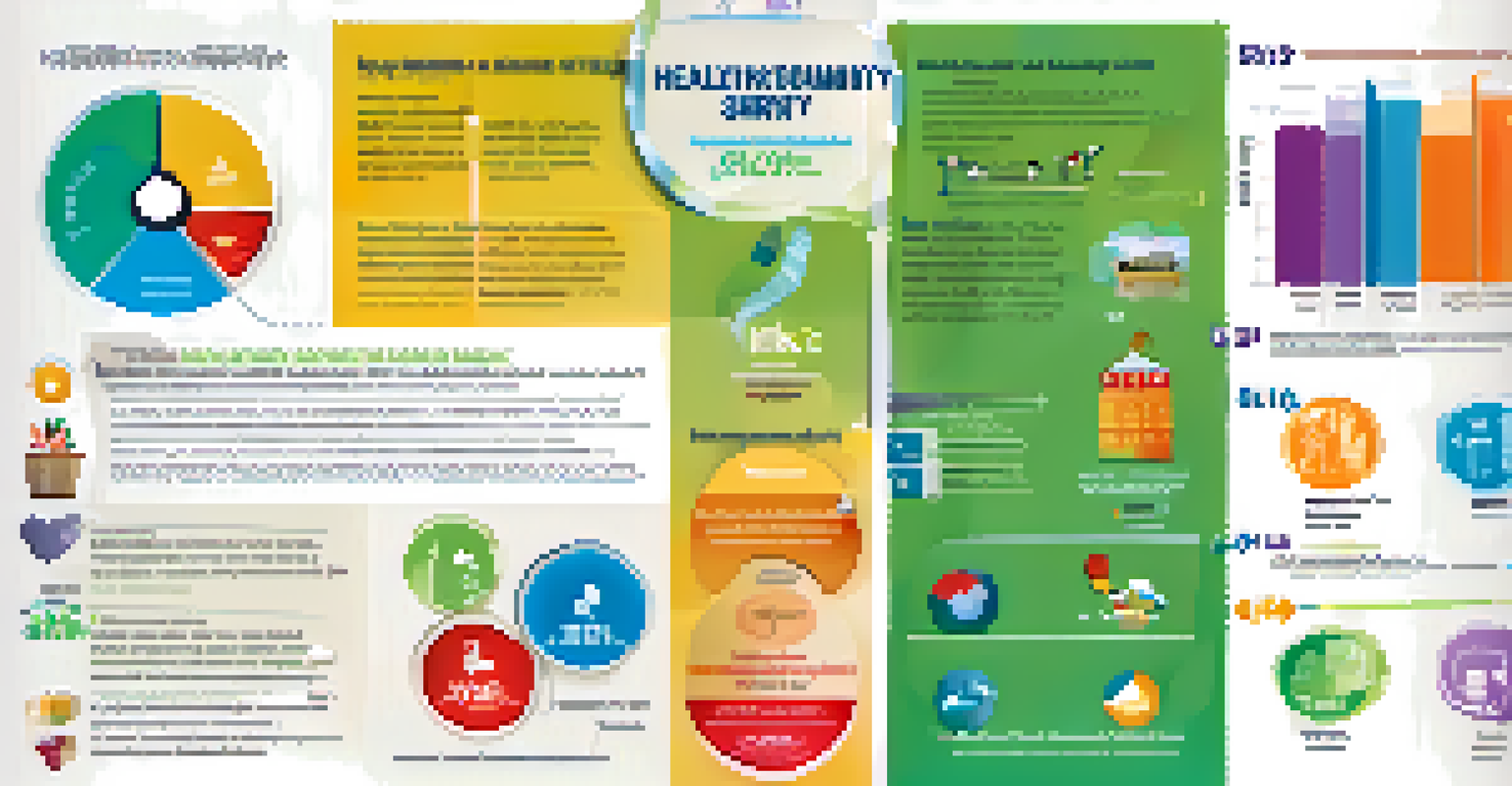Understanding Community Health Needs Through Surveys

The Importance of Assessing Community Health Needs
Understanding community health needs is crucial for tailoring effective health programs. Surveys serve as a valuable tool in this assessment, allowing for direct feedback from community members. By gathering this information, health organizations can identify gaps in services and prioritize initiatives that address the most pressing needs.
The health of our community is a reflection of the health of our individual members. We must listen to their voices to understand their needs.
For example, a community may face high rates of obesity, but without surveying residents, health officials might overlook this issue. Instead, surveys can highlight specific concerns like access to healthy foods or opportunities for exercise. This information is vital for creating targeted interventions that truly make a difference.
In essence, assessing community health needs through surveys helps foster a more informed and responsive healthcare system. It empowers communities to voice their concerns while guiding organizations to allocate resources effectively. Ultimately, this process leads to healthier communities and better health outcomes.
Types of Surveys Used in Community Health Assessments
There are various types of surveys designed to gather insights about community health. Quantitative surveys often use structured questions to gather numerical data, allowing for statistical analysis of trends and patterns. On the other hand, qualitative surveys enable open-ended responses, providing deeper insights into personal experiences and feelings regarding health issues.

For instance, a quantitative survey might ask respondents to rate their access to healthcare services on a scale of one to five. Conversely, a qualitative survey could ask participants to describe their experiences with healthcare providers. By combining both methods, communities can gain a holistic view of their health landscape.
Surveys Identify Health Needs
Community health needs assessments through surveys help organizations pinpoint gaps in services and prioritize interventions.
Ultimately, the choice of survey type depends on the specific objectives of the assessment. By understanding the strengths of each method, health organizations can select the most appropriate tools for their community needs assessment. This thoughtful approach ensures that the data collected is both relevant and actionable.
Designing Effective Community Health Surveys
Creating effective community health surveys requires careful planning and consideration. Questions must be clear, concise, and relevant to the community's unique context. Involving community members in the survey design process can help ensure the questions resonate with the target audience and elicit meaningful responses.
Data is not just numbers; it tells a story that can lead to action and change in our communities.
For example, a survey targeting a community with a high immigrant population may need to include language options or culturally sensitive questions. Additionally, the length of the survey should be manageable to encourage participation without overwhelming respondents. This consideration can significantly improve response rates and data quality.
Moreover, pre-testing the survey with a small group can help identify any ambiguities or issues before full deployment. This pilot phase allows for adjustments to enhance clarity and relevance. Thus, investing time in survey design pays off by yielding more reliable and actionable insights.
Engaging the Community in the Survey Process
Engaging the community in the survey process is essential for gaining trust and fostering participation. When community members feel their voices matter, they are more likely to contribute to the survey. This engagement can be achieved through outreach efforts that explain the purpose of the survey and how the results will be used.
For instance, hosting community meetings or informational sessions can create a platform for dialogue and encourage participation. Sharing success stories from previous surveys can also demonstrate the impact of their input, making it clear that their feedback leads to tangible changes. This transparency builds trust and motivates residents to take part.
Engagement Boosts Survey Participation
Involving community members in the survey process fosters trust and encourages greater participation.
Additionally, offering incentives, such as gift cards or community giveaways, can further encourage participation. Combining these strategies ensures a broader representation of voices, leading to more comprehensive data collection. Ultimately, community engagement is a cornerstone of effective health surveys.
Analyzing Survey Data for Actionable Insights
Once surveys are completed, analyzing the data is the next critical step. This process involves organizing responses, identifying trends, and drawing meaningful conclusions that can inform health initiatives. Data analysis can be conducted using various statistical tools, depending on the complexity of the data collected.
For example, if a survey reveals that many community members struggle with mental health issues, health organizations can delve deeper into demographic data to identify at-risk populations. This targeted analysis allows for the development of specific programs aimed at addressing those needs. It transforms raw data into actionable insights.
Moreover, visualizing the data through charts and graphs can make findings more accessible and understandable to stakeholders. Presenting the results in a clear and engaging manner ensures that the information reaches those who can act on it. Thus, thorough analysis is essential for turning survey findings into effective community health strategies.
Communicating Survey Results to the Community
Communicating survey results back to the community is a vital step in the process. Transparency helps build trust and shows community members that their input is valued and taken seriously. Sharing results through community meetings, newsletters, or local media can keep residents informed and engaged.
For example, hosting a town hall meeting to discuss results can provide a platform for dialogue and feedback. This interaction allows community members to ask questions, voice concerns, and suggest solutions based on the findings. It fosters a sense of community ownership over the health initiatives that may arise from the survey.
Data Analysis Drives Health Strategies
Analyzing survey data transforms raw information into actionable insights for targeted health initiatives.
Additionally, using accessible language and visuals can enhance understanding. Infographics or summary reports can effectively convey complex data in an engaging way. Ultimately, effective communication ensures that the community remains informed and involved in the ongoing efforts to address health needs.
The Role of Follow-Up in Community Health Surveys
Follow-up is a crucial component of the community health survey process. After initial surveys are conducted and results are shared, it’s essential to monitor the impact of any implemented changes. This helps ensure that health initiatives are effectively addressing the identified needs and allows for necessary adjustments.
For instance, if a new program aimed at increasing physical activity is launched, follow-up surveys can assess community participation and satisfaction. Gathering feedback on these initiatives can provide insights into what’s working and what might need improvement. This continuous evaluation fosters a culture of responsiveness.

Moreover, follow-up efforts can reinforce the importance of community engagement in health initiatives. When residents see that their input leads to real changes and improvements, they are more likely to participate in future surveys. Thus, follow-up is not just about assessment; it's about nurturing an ongoing dialogue between health organizations and the community.